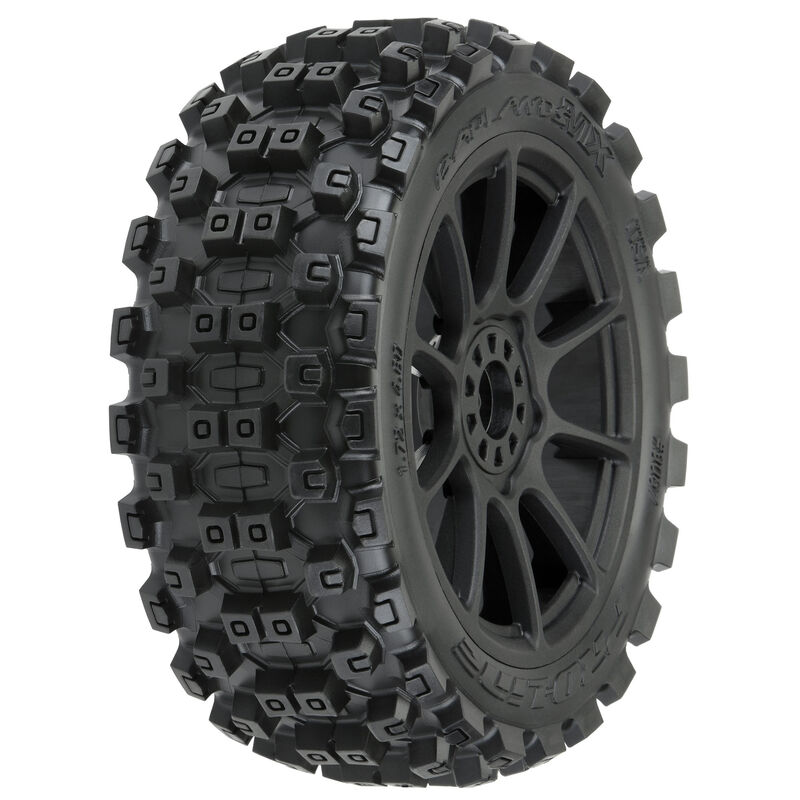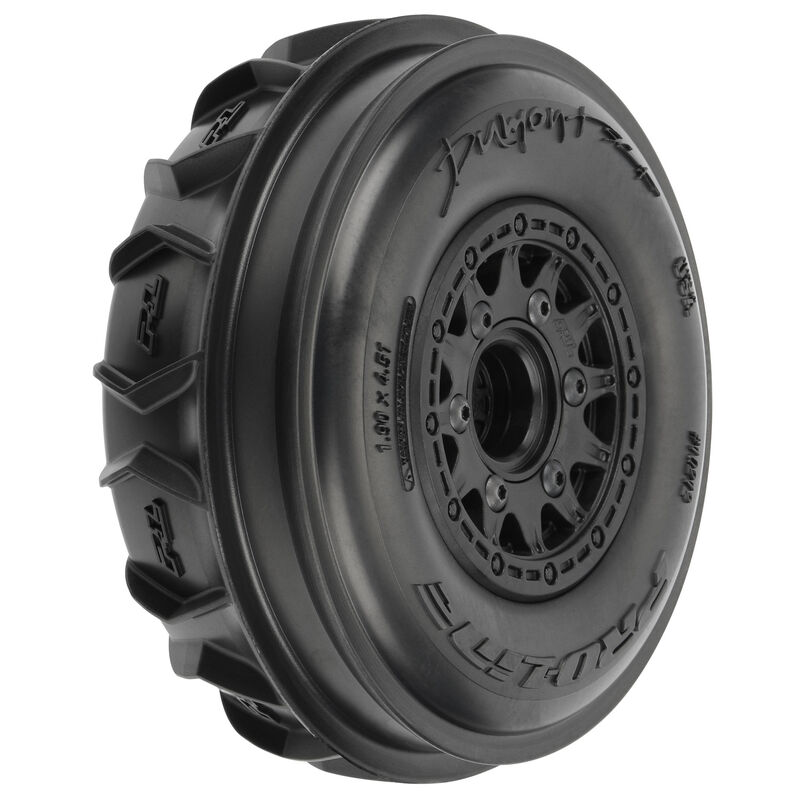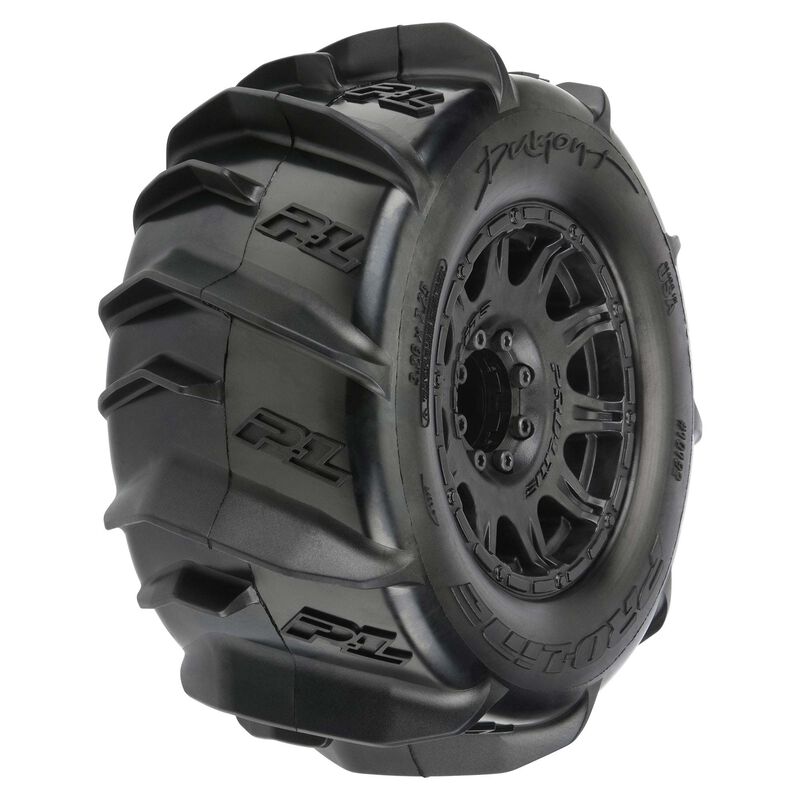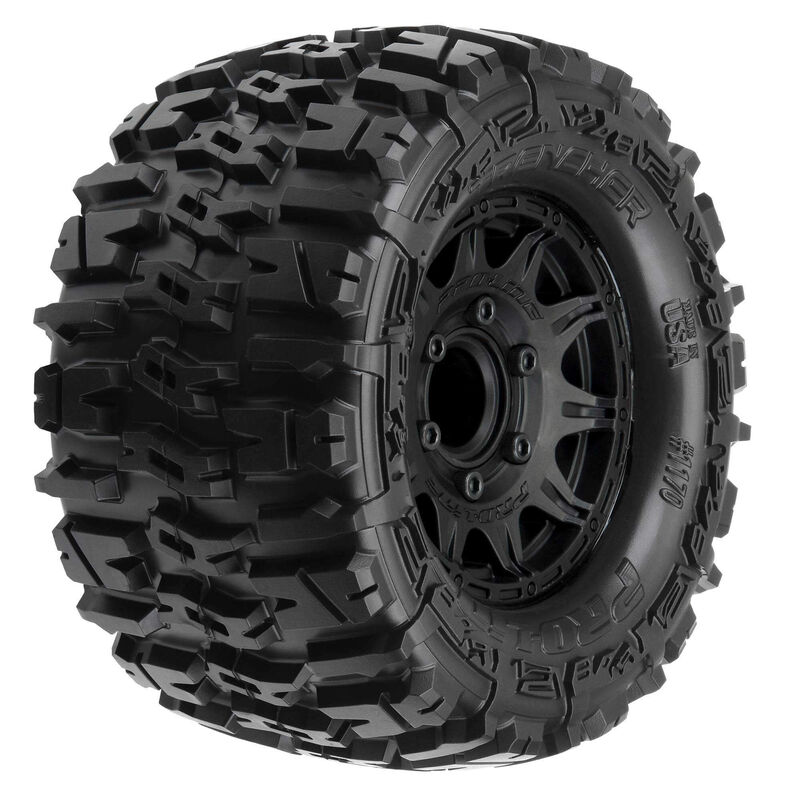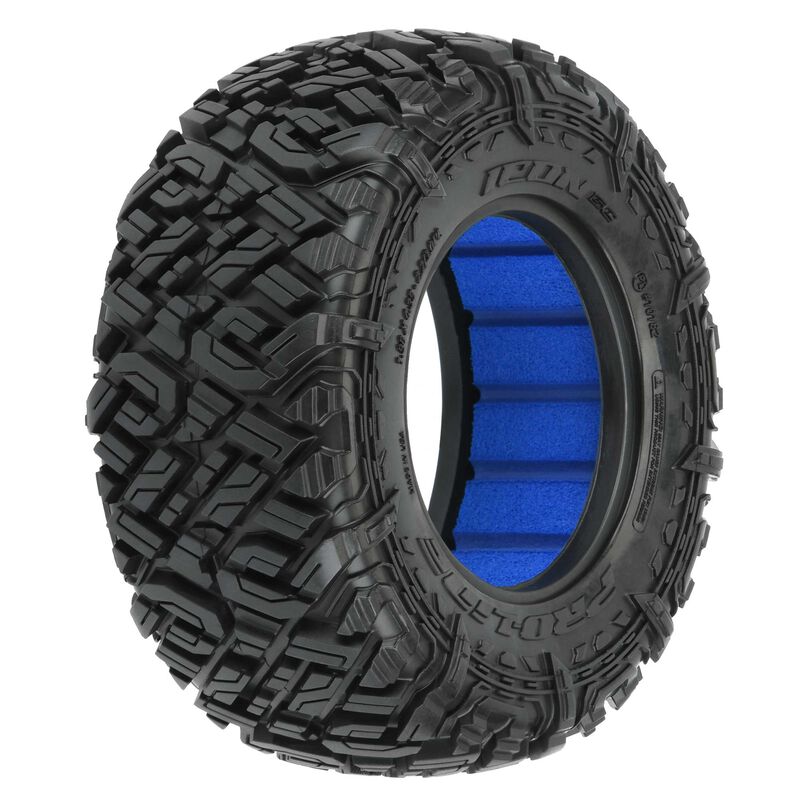Posted: 8/18/23
How to Choose RC Tires
Do an online search for RC tires and it might seem like there’s no end to your options. Even after narrowing your choices down to the size that your remote control car requires, you still have an overwhelming variety of treads and tire compounds available to use. Check out the enormous Horizon Hobby RC tire selection, for example. How do you make the right choice?
First, there won’t be one right choice. Experienced RC car hobbyists carry at least a couple of different mounted tire sets in their pit bags to be ready for any track conditions they encounter. The characteristics of a track surface literally change like the weather, so the best RC tires to use change just as often. You always want to have on hand the best tire compound and tread pattern for whatever lies ahead. And carrying them pre-mounted on the right wheels will allow you to easily swap your RC tires out when away from your workbench.
In this RC tire guide, we cover several of the most popular RC car categories and discuss the RC tires that produce the best results. Many additional variables will influence your tire choice on a given day. Is the track wet from rain? Is it blisteringly hot? How much dust, dirt, and wear are present on the surface? With some experience and experimentation, you’ll soon know exactly which RC tires to pick for the performance you need.
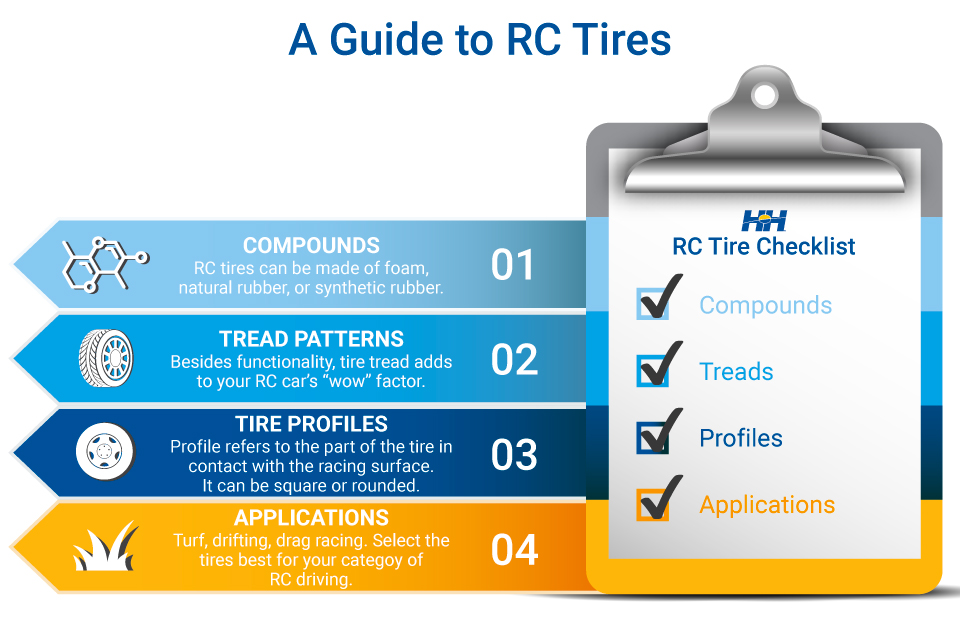
A guide to RC tires for general on- and off-road use
The RC tires you use on your RC car or RC truck affect its performance as much as the motor, suspension, and other components do. To choose the best RC tires for a particular on-road or off-road surface, you have to understand how various RC tire compounds and tread patterns work. An RC tire compound is the material that the tire is made from. The tread pattern is the texture that covers the part of the RC tire in contact with the ground.
Compounds of RC tires
RC tires can be made of foam, natural rubber, or synthetic rubber. Foam RC tires are lightweight and offer plenty of grip, but they’re also prone to “chunking” — pieces of the foam can rip off in chunks fairly easily. Synthetic rubber is softer than natural rubber and is another good choice for high traction. Like foam, however, it can wear rather quickly. Natural rubber RC tires are the most rigid or “hard” of the three, which means they’ll last the longest. But they also provide the least amount of traction.
Every RC tire manufacturer has a system for identifying where each of its tires falls in the range from hard to soft. When you choose RC tires for your on- or off-road RC car, pay attention to the performance characteristics that the compound will provide.
Soft compound RC tires work best on well-packed tracks that have little loose material on the surface. They’re a good choice when you need extra traction on-road and more grip in low-temperature conditions. For even more traction, you can apply a tire additive. Buy spares of soft compound RC tires, because your RC car will wear them out fairly quickly.
Medium compound RC tires are especially effective when the track conditions are less than perfect. If there’s loose dirt on the surface, if the track has spots of rubble, or if the conditions are moderately wet, then medium compound RC tires are a smart choice.
Hard compound RC tires are often used on carpet and turf tracks and work well in hot conditions. Though durable and long lasting, they do slide more easily – which can sometimes be an advantage, such as for RC drifting. More on that later.
Most RC tires are not a solid block of material. They’re hollow, like full-size tires, to reduce weight and cushion bumps. Most rear RC tires come with foam inserts that serve a purpose similar to the air pressure in real tires. The softer the RC tires, the denser the foam insert needs to be to provide sufficient dampening and support.
Tread patterns of RC tires
Now we’ll look at the role that tread patterns play, along with the tire compound, in your RC tire selection. Besides functionality, tire tread adds to your RC car’s “wow” factor. An aggressive RC tire tread gives an RC basher intimidating looks. Many RC tire manufacturers license tire names and tread patterns from well-known, full-scale automakers and reproduce them for scale RC vehicles.
But the main consideration, of course, is how the tire tread contributes to your RC car’s performance. You should select an RC tire tread based mostly on where and how you plan to drive. If you’ll be racing on a flat surface like asphalt or concrete, slick RC tires generally provide the best results. Slicks have no raised tread pattern. They’ll help you get more grip for higher speeds on smooth tracks that would quickly wear down any raised tread.
RC tires are also available with full spike, mini spike, and micro spike tread styles, as well as pin tread. The larger the spike or pin, the better the tire will perform on rough terrain and loosely packed surfaces. Mini spikes work well on carpets and tracks that are fairly smooth and dust-free. The main difference between spike tread and pin tread is that pins are smaller, more pointed, and arranged more densely on the tire.
The front RC tires for many 2WD RC cars and trucks have a ribbed tread design. All ribs are pretty much the same, except that the height and width of the ribs can vary. Experiment and choose your front ribbed RC tires based on the amount of front grip you like best.
Besides compound and tread pattern, there’s a third RC tire characteristic that may influence your choice: the RC tire profile. The profile refers to the part of the tire in contact with the racing surface. It can be square or rounded.
In a square profile RC tire, nearly all of the tire’s width contacts the driving surface. If you stand the tire up on a table, it won’t fall over. Square profile tires offer good forward traction but are not well-suited for sliding through corners. Rounded profile RC tires generate less forward traction, because less of the tire’s width contacts the surface. However, a rounded profile is better in corners and good for driving in rough conditions.
Guide to RC tires for specific applications
The information already presented in this RC tire guide should help you narrow down which RC tires are right for your RC car and performance goals. Now, let’s get a little more specific, and look at which RC tires are best for some of today’s most popular categories of RC driving.
RC tire guide for RC carpet and turf tracks
Turf is a low-maintenance artificial surface used for making on-road and off-road RC racing tracks. Several different types of turf are popular in RC, including low-pile carpet, AstroTurf®, and field turf, which is the same surface used on professional sports fields.
The best RC tires for these turf tracks are spike tread tires. The height of the pile, or fibers in the turf, dictate which spike tread tire you should use. The taller the pile, the longer your RC tire spikes must be to dig into the surface. AstroTurf® and shorter pile carpet tracks can be driven using shorter spikes.
RC tire guide for RC drifting
You select RC tires to increase traction, right? Not always! If you want to try RC drifting, then minimizing traction must be part of your plan. The best RC tires for RC drifting are made of hard, slick compounds rather than rubber. These tires more easily lose their grip on the track and let your RC car slide through the corners.
While specially designed drifting RC tires are available, they can be somewhat costly. Some have a beveled edge that improves your drifting ability. If possible, select pre-mounted drifting RC tires and wheels. The hard slicks that are best for RC drifting can be difficult to coax onto wheels.
Expensive specialty tires for RC drifting aren’t your only option. As long as your tires are smooth and you’re on a slick surface, it’s possible to enjoy RC drifting fun.
RC tire guide for RC drag racing
In order to win RC drag races, your RC drag car must be able to reach top speed in just seconds. You need maximum grip on the drag strip in order to do that.
Rubber RC tires can slip under very rapid acceleration, which creates heat and brings the rubber close to melting. For this reason, most RC drag enthusiasts prefer to use foam RC tires. If they’re clean and properly trued, foam RC tires will have a high grip without slipping and melting.
RC tires used for RC drag racing can be treated with special traction fluids that will increase their grip. Another alternative is to spray a little WD-40® on foam RC tires. Wipe it off after about five minutes. You’ll notice that they feel stiffer and free of grease.
RC tire guide for RC rock crawling
Nothing puts an RC tire’s durability, versatility, and style to the test like RC rock crawling. Not only do RC rock crawling enthusiasts take their RC rigs over a wide range of very demanding terrain, but they also want them to look — from top to bottom — as much like a full-scale rig as possible.
Identifying RC tires that complement your RC rock crawler’s scale looks is easy. But how do you know which ones can hold up to driving over rocks, sticks, and logs, and through dirt, mud, and creek beds? Belted RC tires, like full-size belted tires, provide the necessary impact and puncture resistance. Those with reinforced sidewalls are even more puncture-proof. The added toughness of belted RC tires also protects them from deformation and enhances their rock crawling capabilities.
Such RC tires can be expensive, especially if you need to replace them often. Rest assured, you can enjoy a great rock crawling experience with your rig using a set of all-terrain, mud-terrain, or other off-road tires with a high-traction tread pattern.
Ultimately, the best RC tire choice is the one that allows you to have the most fun possible with your RC car or RC truck. Try a variety of styles and tread patterns. Find out what works for you, and create your own guide to RC tires!
